| History | |
|---|---|
| Name | Wave |
| Launched | 1838 |
| Stricken | Sank 5 July 1848 |
| General characteristics | |
| Class and type | Brig |
| Tons burthen | 103 tons |
Wave was a brig that was wrecked in 1848 at Cheynes Beach near Cape Riche, Western Australia.
| History | |
|---|---|
| Name | Wave |
| Launched | 1838 |
| Stricken | Sank 5 July 1848 |
| General characteristics | |
| Class and type | Brig |
| Tons burthen | 103 tons |
Wave was a brig that was wrecked in 1848 at Cheynes Beach near Cape Riche, Western Australia.
Built in 1838 [1] in Victoria, Bermuda, the vessel was constructed from wood and copper sheathed. It had a square stern, single deck, no galleries and a billet head. The vessel was acquired by R. Brown in 1847 and was registered in London. It was then acquired in 1848 by William Younghusband and Company of Adelaide and registered there. [2]
The vessel was in command of James C. Coke [3] and was transporting cargo from Adelaide to Shanghai via Albany and Singapore. [1] The brig left Adelaide on 5 June 1848 loaded mostly with flour and was en route to Albany to load a shipment of sandalwood. [2]
On 5 July 1848, [4] the vessel was anchored at Cheyne Bay near Cape Riche when it was blown ashore by a heavy gale. Champion and Arpenteur were dispatched from King George Sound [5] to assist. Champion managed to pull Wave offshore but Wave was leaking badly and foundered then sunk. [2]
Champion then salvaged some of the cargo and then transported the crew, minus the captain, back to Albany. Captain Coke sailed to Adelaide aboard HMS Acheron, commanded by Captain John Lort Stokes.
The owners of Arpenteur acquired the wreck of Wave and that cargo not already salvaged for £330. Arpenteur sailed for Fremantle with 27 tons of flour, 1,000 bushels of wheat, the rigging and sails that the crew had salvaged from Wave. [2]
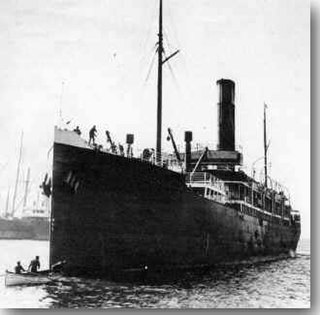
SS Yongala was a passenger and cargo ship that sank off Cape Bowling Green, Queensland, Australia on 23 March 1911. En route from Melbourne to Cairns she steamed into a cyclone and sank south of Townsville.

SS Georgette was a steamship built in 1872. She is best known, especially in Irish-American circles, for the part played in the story of the Catalpa rescue in April 1876. While the events surrounding her shipwrecking eight months later are dramatic and did capture the imagination of the local press, the ship itself had little effect on the coastal trade. Though heralding the way forward in the change from sail to steam on the long Western Australian coast, like its predecessor SS Xantho, Georgette had a short and ill-starred career and sank soon after its arrival there.
Over 1400 ships have been wrecked on the coast of Western Australia. This relatively large number of shipwrecks is due to a number of factors, including:
Tryall was a British East India Company-owned East Indiaman launched in 1621. She was under the command of John Brooke when she was wrecked on the Tryal Rocks off the north-west coast of Western Australia in 1622. Her crew were the first Englishmen to sight or land on Australia. The wreck is Australia's oldest known shipwreck.
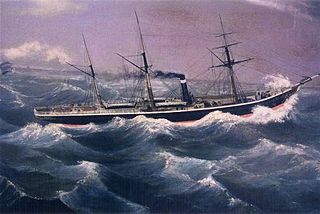
SS Admella was an Australian passenger steamship that was shipwrecked on a submerged reef off the coast of Carpenter Rocks, south west of Mount Gambier South Australia, in the early hours of Saturday 6 August 1859. Survivors clung to the wreck for over a week and many people took days to die as they glimpsed the land from the sea and watched as one rescue attempt after another failed.

Loch Vennachar was a three-masted iron sailing ship (clipper) that operated between Great Britain and Australia between the late 19th century and 1905. The name was drawn from Loch Venachar, a loch which lies to the south-west of the burgh of Callander, in the Stirling region of Scotland. It is understood to mean "most beautiful lady" in Scottish Gaelic.

SS Ferret was an iron screw steamship of 460 tons built in Glasgow (Scotland) in 1871 by J & G Thomson, Glasgow.
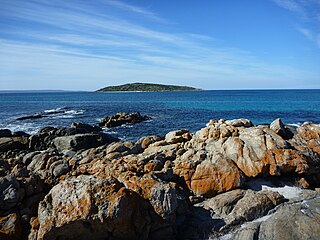
Cape Riche is a cape and rural locality in the Great Southern region of Western Australia. By road, it is 525 km south-east of Perth and 123 km north-east of Albany
The Advance was a composite schooner built in 1874 at Auckland, New Zealand, that was wrecked when she drifted onto rocks at Henrys Head, Botany Bay, New South Wales, Australia, on 12 June 1902, whilst carrying ballast between Wollongong and Newcastle, New South Wales.
Sun was a brig built in 1819 at Sunderland and was condemned at the Cape of Good Hope in August 1822. She was repaired and began sailing east of the Cape. She was wrecked in May 1826 in the Torres Strait.
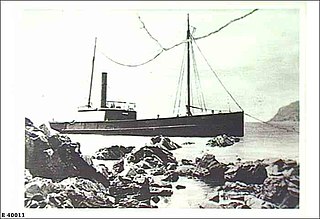
Ellen was a steamship that was launched in 1883 and whose career involved coastal shipping firstly in the Colony of Queensland and then in the Australian state of South Australia. It was wrecked in Gulf St Vincent in South Australia at Morgan's Beach near the town of Cape Jervis on Saturday, 12 December 1908 during its return from fishing in waters around Kangaroo Island to a destination on the mainland.

Geffrard was a 321-ton British brig that traded between Australia, Mauritius, and Shanghai, and was wrecked off the coast of Western Australia on 13 June 1875. She was built in 1853 by Fred Clark in Jersey in the Channel Islands. By 1873 she had made her way to Melbourne and was owned by Fred Davis and under the control of Captain William James Munday. Her movements after that were generally around the southern coasts of Australia, from Geraldton in the west to Sydney in the east, laden with a variety of general cargo.
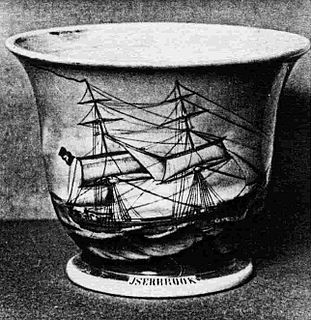
Iserbrook was a general cargo and passenger brig built in 1853 at Hamburg (Germany) for Joh. Ces. Godeffroy & Sohn. It spent over twenty years as an immigrant and general cargo vessel, transporting passengers from Hamburg to South Africa, Australia and Chile, as well as servicing its owner's business in the Pacific. Later on, the vessel came into Australian possession and continued sailing for the Pacific trade. In 1878 it caught fire and was sunk the same year. At last, it was re-floated and used as a transport barge and hulk in Sydney until it sank again and finally was blown up.
George Cheyne was an early settler in the Great Southern region of Western Australia.
The Arpenteur was a brig owned by William Owen and John Ridley. It was wrecked at Hassell Beach in Cheyne Bay near Cape Riche when a gale ran it ashore 7 November 1849.
Lady Lyttleton was a barque that sunk in the Emu Point Channel in Oyster Harbour near Albany in the Great Southern region of Western Australia.
Libelle was a 650-ton iron-hulled barque, built in the Free City of Bremen in 1864. The ship was transporting quicksilver and passengers when she wrecked on the eastern reef of Wake Island in 1866.
Admiral Gardner was launched in 1797 as an East Indiaman for the British East India Company (EIC). She made five voyages for the EIC, during the fourth of which she participated in an inconclusive single-ship action with a French privateer. Admiral Gardner was wrecked in January 1809. The wreck is a Protected Wreck managed by Historic England. She was named after Admiral Alan Gardner.
The Hive Shipwreck is a heritage-listed shipwreck site of the Hive, a former convict transportation ship located approximately 40 metres (130 ft) off Bherwerre Beach, Jervis Bay Territory, Australia. It was added to the New South Wales State Heritage Register on 1 April 2010.